
Frac’ing proves the stupidity of the human species. In a world running out of safe water, and in some communities, running out of contaminated water, politicians (so called “law” makers but really rape enablers, both rape by corporations and men raping women and kids with courts set up to help them get away with it) and self regulators let frac’ers inject fresh water, most of which is lost forever to the hydrogeological cycle. Stupid.
Add “forever” toxicity, health harms, community divisions to divide and conquer to be able to poison freely, and economic losses caused by all stages of the process. Super stupid.
Cumulatively add insanity and idiocy to our species’ super stupidity: In more and more frac’d jurisdictions, authorities/regulators (mostly run by oil and gas executives), politicians (mostly bribed, bought and owned by oil and gas companies), academia (mostly bought and owned by oil and gas company “donations” and research grants) and slick polluter lobby (propaganda) groups like CAPP are conning frac’d communities to irrigate/fertilize crops and water livestock for human consumption with toxic frac and or drilling waste.
Was the “trade secret” scam devised to hide that frac’ers are disposing of a variety of extremely toxic wastes from PFAS, tarsands and or nuclear industries?
After Encana/Ovintiv illegally frac’d repeatdly directly into Rosebud’s drinking water aquifers, my well water became super slippery, “slick water.” It was the weirdest feeling and dangerous because holding onto dishes while washing them became nearly impossible.
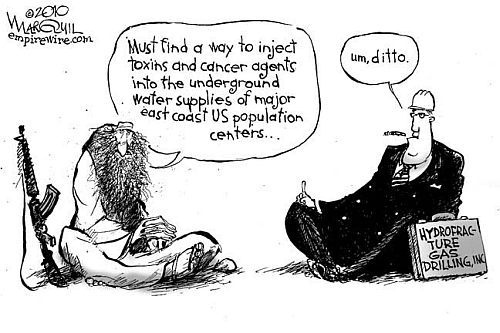

I will never forgive NGOs their incessant enabling of frac’ers. No pay cheque is worth the harms caused to families, livestock, wildlife, fish and the environment.

Why not say Stop Frac’ing, instead of listing many “should” recommendations that will keep the poisoning going strong?![]()
This clip is worth your time:
Nate Hagens interviews Martin Scheringer: “The Growing Threat from Chemical Pollution” Sept 2022
Fracking with “Forever Chemicals” in Texas, Oil and Gas Companies Used PFAS in Texas Wells; Extent of Use Obscured by Six Billion Pounds of “Trade Secret” Chemicals by Dusty Horwitt, J.D. and Barbara Gottlieb, Data Analysis by Gary Allison, February 2023, Physicians for Social Responsibility

Executive Summary
Previously unpublicized information unearthed by Physicians for Social Responsibility (PSR) shows that since at least 2013, oil and gas companies used in Texas oil and gas wells more than 43,000 pounds of a class of extremely toxic and persistent chemicals known as PFAS.
However, gaps in Texas’s disclosure rules prevent the public from knowing how widely PFAS – or other toxic chemicals – have been used in oil and gas drilling and extraction. These findings raise concerns that Texans may unknowingly be exposed to highly hazardous substances. PFAS are a highly dangerous class of chemicals, known for their toxicity at extremely low levels, their multiple negative health effects including cancer, and their resistance to breaking down in the environment, leading to their nickname, “forever chemicals.”
PSR analyzed industry self-reported data recorded in FracFocus, the official repository for Texas’s required disclosure of chemicals used in hydraulic fracturing (“fracking”), and found that between 2013 and 2022, oil and gas companies injected more than 1,600 oil and gas wells in 73 counties with some 43,000 pounds of the PFAS known as PTFE/Teflon. Oil and gas companies injected 1,222 wells in 66 counties with more than 53,000 pounds of additional chemicals that are PFAS, likely PFAS, or precursor chemicals that could degrade into PFAS.
However, the number of definitively identified or likely cases of PFAS use may significantly underrepresent the use and presence of PFAS associated with oil and gas operations in the state. That is in large part because Texas law allows oil and gas companies and chemical manufacturers to withhold fracking chemical identities from the public and potentially even from regulators by claiming them as a “trade secret.” Between 2013 and 2022, companies claimed trade secret privileges in over 58,000 oil and gas wells located across 183 of Texas’s 253 counties. The unidentified trade secret chemicals used in Texas over this roughly decade-long period totaled 6.1 billion pounds. An interactive map showing the locations of wells injected with PTFE/Teflon, fluorosurfactants, and trade secret chemicals is available here.
By shielding from public view the chemicals injected into oil and gas wells, trade secret claims and other gaps in disclosure rules raise the potential that Texans may be directly exposed, or their groundwater and well water may be exposed, to PFAS and other toxic chemicals from hundreds or even thousands of oil and gas production wells.
Among our key findings are:
• A PFAS known as PTFE/Teflon was used in oil and gas extraction in Texas over the past decade in at least 1,625 oil and gas wells in 73 counties.
• A PFAS and potential fluorosurfactant called fluoroalkyl alcohol substituted polyethylene glycol was used in at least 65 wells between 2013 and 2022. Fluorosurfactants are part of a larger group of chemicals known as “surfactants” that are commonly used in fracking and can reduce the surface tension of a liquid among other properties. Fluorosurfactants encompass the dangerous PFAS known as PFOA and PFOS and hundreds of other less-studied replacement chemicals and mixtures. Some are known to be extremely toxic to people, could be harmful to animals, and are expected to persist in the environment.
• Trade secrets make it extremely difficult to determine how extensively PFAS (and other highly toxic chemicals) have been used in Texas. PSR’s analysis of FracFocus data revealed that, between 2013 and 2022, Texas well operators declared at least one fracking chemical a trade secret in 58,199 oil and gas wells in 183 counties. Trade secret chemicals used in Texas over this roughly decade-long period totaled 6.1 billion pounds.
• In addition, over the past decade, oil and gas firms fracked 30,700 wells, spread across 171 counties, with at least one trade secret surfactant totaling 331 million pounds. Some of these may be fluorosurfactants. Evidence shows that fluorosurfactants that are PFAS
have been used in oil and gas extraction for decades. This evidence combined with data showing extensive trade secret use in Texas’s oil and gas wells indicates that PFAS has been used more extensively than publicly reported to FracFocus.
• PFAS pollution of groundwater, surface water and air in Texas is possible wherever these substances have been used at oil and gas wells and wherever oil and gas wastewater containing PFAS has been disposed of. This includes disposal in injection wells and spreading the fluid onto soil in various types of land application, both common practices in Texas.![]() And common in Canada too. So much so, oil and gas company reps lie to landowners and the public, claiming their toxic waste is free fertilizer, this quote from the 2006 Davidson (Saskatchewan) Leader article below:
And common in Canada too. So much so, oil and gas company reps lie to landowners and the public, claiming their toxic waste is free fertilizer, this quote from the 2006 Davidson (Saskatchewan) Leader article below:
“The drilling fluid consists of calcium nitrate (fertilizer) which is spread onto the farmer’s land after completion. This creates a double benefit for the farmer. He has lease revenue and fertilized land when it is all said and done.”
How many billions of pounds of toxic chemicals, including PFAS, have been dumped on Canadian crop lands and pastures under this free fertilizer scam? How much has made its way into our drinking water aquifers? What are we eating and drinking?![]()
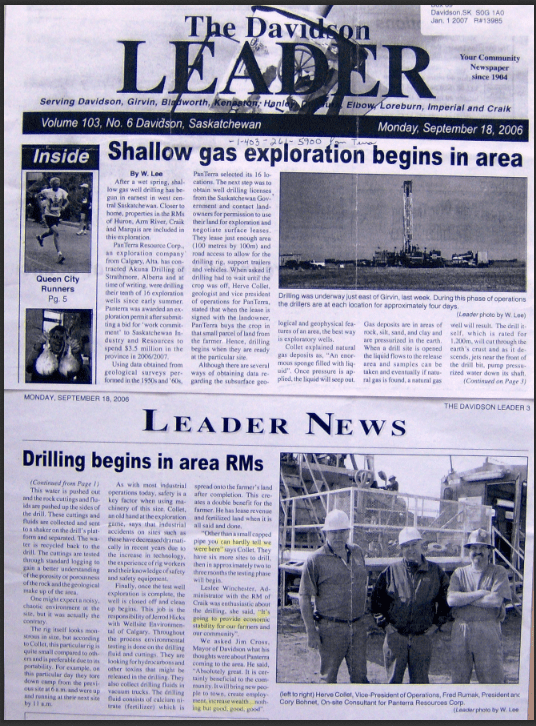
• This variety of potential pathways to exposure raises concerns that PFAS could endanger the environment and people’s health.
In light of these findings, PSR recommends the following:
• Halt PFAS use in oil and gas extraction. Texas should follow the lead of Colorado, a major oil- and gas-producing state which banned the use of PFAS in oil and gas wells through legislation![]() Not really, the legislation just requires that companies confirm they don’t use PFAS. Oil and gas companies lie, all the time, with politicians and regulators bending over backwards to enable them. See also comments below on Colorado’s trade secrets loophole, big enough to frac millions of times through.
Not really, the legislation just requires that companies confirm they don’t use PFAS. Oil and gas companies lie, all the time, with politicians and regulators bending over backwards to enable them. See also comments below on Colorado’s trade secrets loophole, big enough to frac millions of times through.![]() passed in June 2022. Furthermore, Texas and the U.S. Environmental Protection Agency (EPA) should prohibit PFAS from being used, manufactured, or imported for oil and gas
passed in June 2022. Furthermore, Texas and the U.S. Environmental Protection Agency (EPA) should prohibit PFAS from being used, manufactured, or imported for oil and gas
extraction. Many PFAS are immediately replaceable with less persistent and less toxic substances, including for use in the oil and gas industry.![]() Frac’ing is insanity. It needs to be criminalized the world over, not enabled like this.
Frac’ing is insanity. It needs to be criminalized the world over, not enabled like this.![]()
• Expand public disclosure. Texas should ![]() escape hatch word, industry’s favourite
escape hatch word, industry’s favourite![]() greatly expand its requirements for public disclosure of oil and gas chemicals. The state could again follow the example offered by Colorado by requiring disclosure of all individual chemicals used in oil and gas wells without exceptions for trade secrets
greatly expand its requirements for public disclosure of oil and gas chemicals. The state could again follow the example offered by Colorado by requiring disclosure of all individual chemicals used in oil and gas wells without exceptions for trade secrets![]() Pfff! Colorado’s legislation was changed to allow trade secrets. I pointed that out on May 20, 2022, in writing (copied below), to one of the authors of this current report. To see that he continues to falsely report on the matter has me now no longer trusting him, his work, or PSE. Why not report honestly?
Pfff! Colorado’s legislation was changed to allow trade secrets. I pointed that out on May 20, 2022, in writing (copied below), to one of the authors of this current report. To see that he continues to falsely report on the matter has me now no longer trusting him, his work, or PSE. Why not report honestly?
[2022] 05 11: Colorado fracking disclosure bill changed to allow trade secrets ...But, in an amendment backed by the Colorado Oil & Gas Conservation Commission, the state’s oil well regulator, fracking companies would still be able to guard formulations as proprietary trade secrets, as allowed under current law. The combination of alphabetical disclosure but the preservation of trade secrets claims is a compromise that appeared likely to speed the bill to passage Wednesday, the final day of the General Assembly’s regular session. ... FROM THE AMENDED BILL, PG 3: ... If a manufacturer believes that any information that will be included on a chemical disclosure list is a trade secret, the manufacturer must file a trade secret claim with the commission. If the commission determines that the information covered by the trade secret claim constitutes a trade secret, the commission shall not include the information in any applicable chemical disclosure list. ... DOES ANYONE TRUST colorado's oil & gas commission (other than industry)?
Trade secrets are still allowed in Colorado, just more sneakily hidden, which means companies are likely still injecting and dumping PFAS, hiding them in their beloved secret file. I doubt the world’s most powerful and greediest, nastiest industry will ever allow honesty, accountability and chemical disclosure and no regulator or gov’t anywhere has the courage to make them![]() , while requiring disclosure on the part of chemical manufacturers who know best what chemicals are being used. Texas should also require chemical disclosure prior to fracking, as have several states including California, West Virginia, and Wyoming.
, while requiring disclosure on the part of chemical manufacturers who know best what chemicals are being used. Texas should also require chemical disclosure prior to fracking, as have several states including California, West Virginia, and Wyoming.
• Increase testing and tracking. Texas and/or the U.S. EPA should determine where PFAS have been used in oil and gas operations in the state and where related wastes have been deposited and should test nearby residents, water, soil, flora, and fauna for PFAS.
• Require funding and cleanup. Oil and gas and chemical firms should be required to fund environmental testing for PFAS in their areas of operation where these are needed, and should PFAS be found, be required to fund cleanup. If water cleanup is impossible, the companies responsible for the use of PFAS should pay for alternative sources of water for drinking, household uses, and agriculture, as needed.
• Reform Texas’s regulations for underground injection disposal wells to prohibit wells close to underground sources of water, to require groundwater monitoring for contaminants near the wells, and to require full public disclosure of the chemicals in the wastewater.
• Transition to renewable energy, better regulation. ![]() Better regulation? What regulation? It doesn’t matter what regulations say, companies just ignore them, and or piss on them while regulators (and often courts) help companies break the law!
Better regulation? What regulation? It doesn’t matter what regulations say, companies just ignore them, and or piss on them while regulators (and often courts) help companies break the law!![]() Given the use of highly toxic chemicals in oil and gas extraction, including but not limited to PFAS, as well as climate impacts of oil and gas, Texas should transition away from fracking and move toward renewable energy and efficiency. This transition should be structured to provide economic support for oil and gas workers.
Given the use of highly toxic chemicals in oil and gas extraction, including but not limited to PFAS, as well as climate impacts of oil and gas, Texas should transition away from fracking and move toward renewable energy and efficiency. This transition should be structured to provide economic support for oil and gas workers.
However, as long as we have drilling and fracking, the state should better regulate these practices so that Texans are not exposed to toxic substances. The state should also empower local governments to regulate the industry. When doubt exists as to the existence or danger of contamination, the rule of thumb should be, “First, do no harm.”
![]() Why use industry’s and its self regulators’ favourite escape hatch word, “Should?” It means nothing, e.g. should, but won’t is standard industry practice. Did industry edit this report (the way corporate lawyers/lobby groups write/edit laws written by politicians? Why not use words like must and need to instead of useless should unless the intent is to enable?
Why use industry’s and its self regulators’ favourite escape hatch word, “Should?” It means nothing, e.g. should, but won’t is standard industry practice. Did industry edit this report (the way corporate lawyers/lobby groups write/edit laws written by politicians? Why not use words like must and need to instead of useless should unless the intent is to enable?![]()

![]()
Refer also to:

2003: Alberta Landspraying While Drilling (LWD) Review by Alberta Sustainable Resource Development, released three years later, only after FOIP and public pressure.
2005:

Encana taking fresh water to drill ‘n frac around Rosebud, after promising in public meetings the company doesn’t inject untreated surface water (to prevent E. coli contamination of drinking water). Later, when some water wells were contaminated with E. coli, regulators and Encana – of course – blamed the harmed families.
2005: Life Inside a Science Project


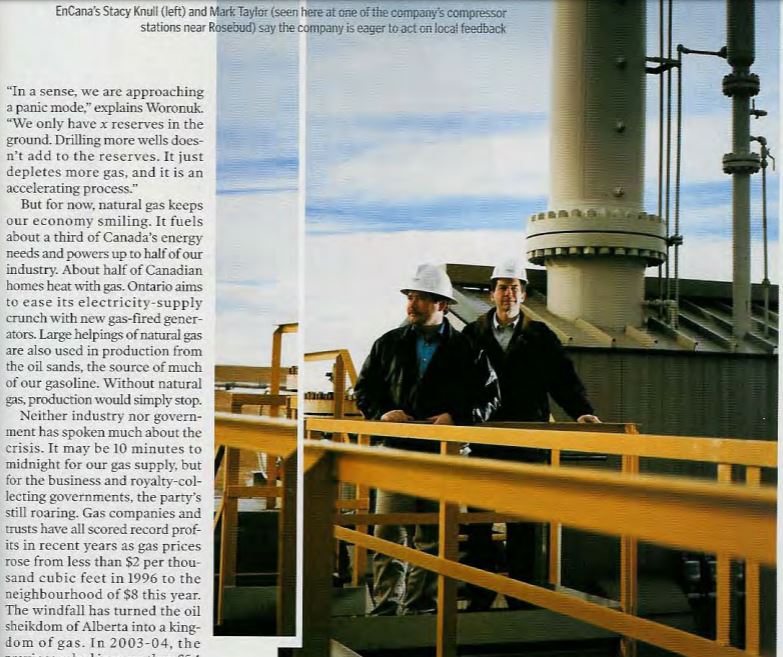
![]() Then Encana manager Mark Taylor (in photo above) lied to us, told my community the company would never frac anywhere near drinking water aquifers – after Encana already had frac’d directly into them in Rosebud Alberta and Pavillion Wyoming.
Then Encana manager Mark Taylor (in photo above) lied to us, told my community the company would never frac anywhere near drinking water aquifers – after Encana already had frac’d directly into them in Rosebud Alberta and Pavillion Wyoming.
Subsequently, Mr. Taylor was rewarded with a cushy powerful job at the very regulator (then EUB, now AER) that engaged in violating my charter rights and fraud to cover up Encana’s crimes and contamination. He was later mysteriously turfed, along with head honcho Jim Ellis and others at the AER involved in financial hanky panky, with his promo page scrubbed: Executive Vice President Mark Taylor, Operations Division, AER.![]()
2005:

Note Encana’s beloved escape hatch word “should” in slide below:
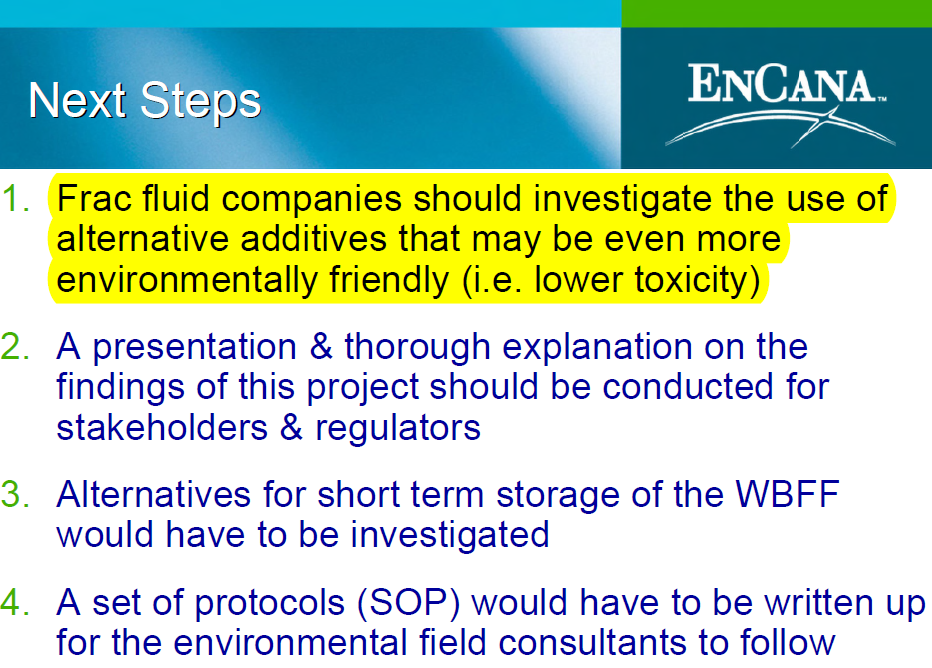
2006: CAPP’s Best Management [Voluntary] Practices for NGC/CBM:
“Drilling fluids are transported, stored and handled in tanks. Typically, drilling fluid waste will be transported off-site for re-use and treatment/disposal…. Some additives may be caustic, toxic, or acidic.”
![]() After I went public with this damning documented evidence that industry knew/knows how toxic their frac shit waste is, CAPP removed it from public access so I uploaded it here.
After I went public with this damning documented evidence that industry knew/knows how toxic their frac shit waste is, CAPP removed it from public access so I uploaded it here.![]()
2006: Shallow frac’ing begins in Davidson, Saskatchewan
“The drilling fluid consists of calcium nitrate (fertilizer) which is spread onto the farmer’s land after completion. This creates a double benefit for the farmer. He has lease revenue and fertilized land when it’s all said and done.”

2009: Report by Canada’s National energy regulator (NEB) in 2009, ignored by main media:
However, as a technology driven play, the rate of development of shale gas may become limited by the availability of required resources, such as fresh water….
… Drilling and hydraulically fracturing wells can be water-intensive procedures; however, there is very limited Canadian experience from which to estimate potential environmental impacts. … Flow-back water is infrequently reused in other fracs because of the potential for corrosion or scaling, where the dissolved salts may precipitate out of the water and clog parts of the well or the formation. … Finally, there are some environmental concerns with development of shale gas in Canada. Little is known about what the ultimate impact on freshwater resources will be.
2010: Natural Gas Operations from a Public Health Perspective by Theo Colborn, Carol Kwiatkowski, Kim Schultz, and Mary Bachran, accepted for publication September 4, 2010, in International Journal of Human and Ecological Risk Assessment 17 (2011): 1039-1056.
For many years, drillers have insisted that they do not use toxic chemicals to drill for gas, only guar gum, mud, and sand. While much attention is being given to chemicals used during fracking, our findings indicate that drilling chemicals can be equally, if not more dangerous.
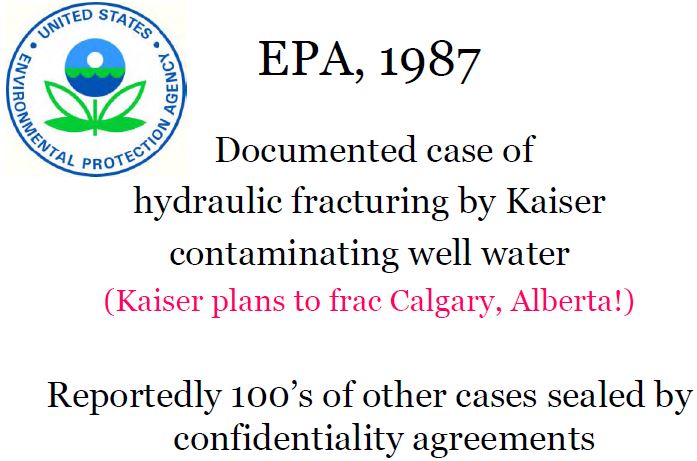
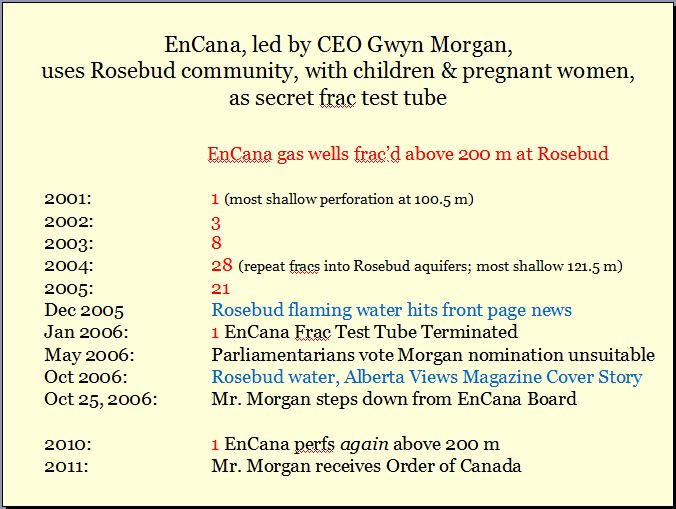
![]() PFAS make things slippery. After Encana, led at the time by CEO Gwyn Morgan, illegally frac’d my community’s aquifers, my well water turned slippery (so much so, doing the dishes resulted in breaking many and cuts to my fingers and thumbs) and corrosive (so much so, parts of the plumbing in the house disintegrated). Did Encana frac Rosebud’s drinking water supply with deadly PFAS?
PFAS make things slippery. After Encana, led at the time by CEO Gwyn Morgan, illegally frac’d my community’s aquifers, my well water turned slippery (so much so, doing the dishes resulted in breaking many and cuts to my fingers and thumbs) and corrosive (so much so, parts of the plumbing in the house disintegrated). Did Encana frac Rosebud’s drinking water supply with deadly PFAS?
Dumping toxic waste on foodland and roads or piled in communities or dumped in unlined pits near homes and communities is how Alberta’s “best-in-class” “world-class” Charter violating, lying spying AER lets it happen:![]()
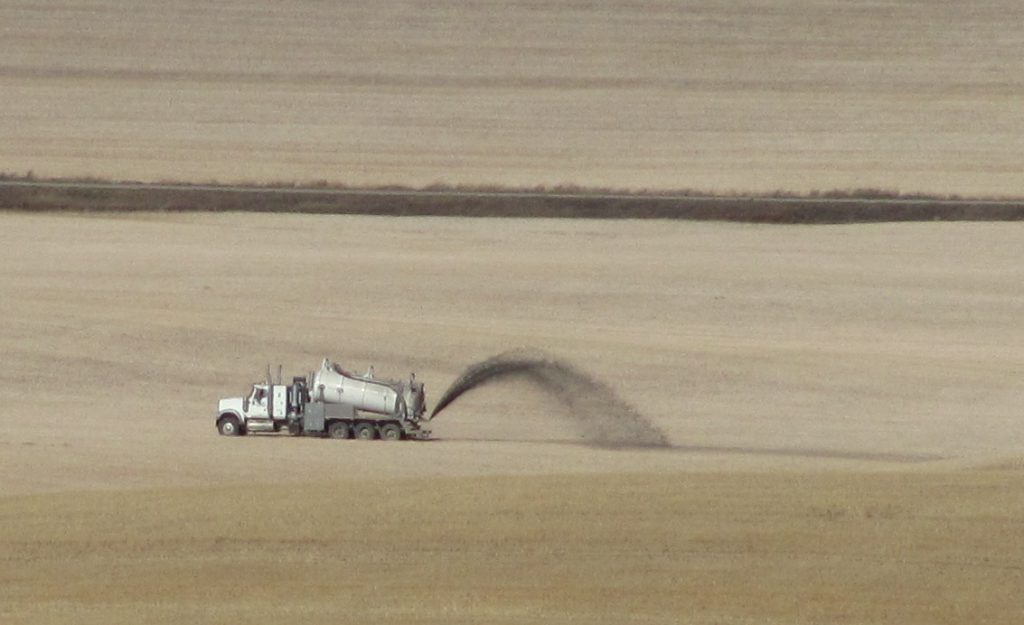
2011 Encana waste dumping just east of Rosebud, Alberta in heavy wind blowing towards the community as residents were leaving church

2011 Encana waste dumping strips on food land near Rosebud Alberta, just east of where the company illegally fractured into the community’s drinking water aquifers in 2004
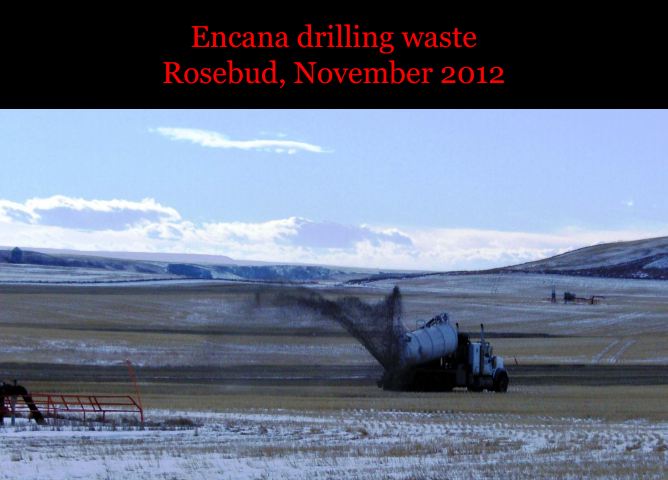
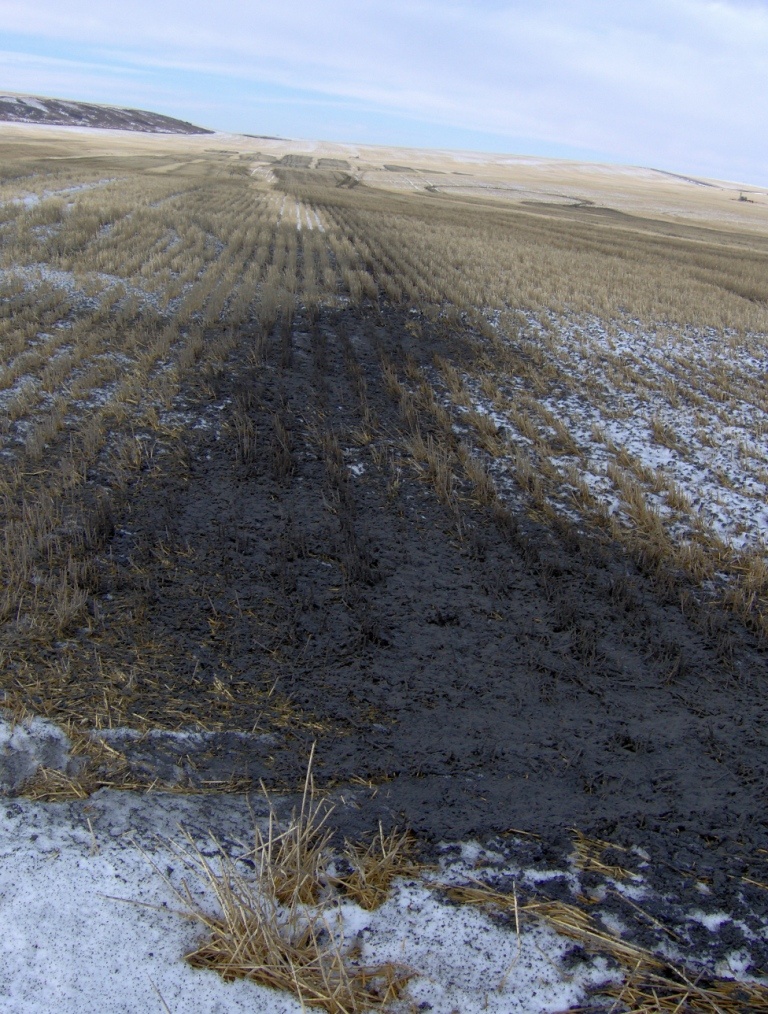


Above photos: 2012 Encana dumping waste on foodland at Rosebud, Alberta in same location as in 2011.
What is the cumulative contamination impact to soil, air and water?

![]() Intrinsik/Dr. Donald Davies is/was Encana’s/frac industry’s consultant of choice for falsely claiming frac fluids/industry’s sour gases are natural and or perfectly safe. This vital 2012 presentation, important and relevant to my lawsuit, was suspiciously not provided to me by Encana in the court ordered document exchange. Because Encana frac’d/Ovintiv frac’s with PFAS?
Intrinsik/Dr. Donald Davies is/was Encana’s/frac industry’s consultant of choice for falsely claiming frac fluids/industry’s sour gases are natural and or perfectly safe. This vital 2012 presentation, important and relevant to my lawsuit, was suspiciously not provided to me by Encana in the court ordered document exchange. Because Encana frac’d/Ovintiv frac’s with PFAS?![]()
Below, oilfield waste dumped on foodland in the Lochend, NW of Calgary:

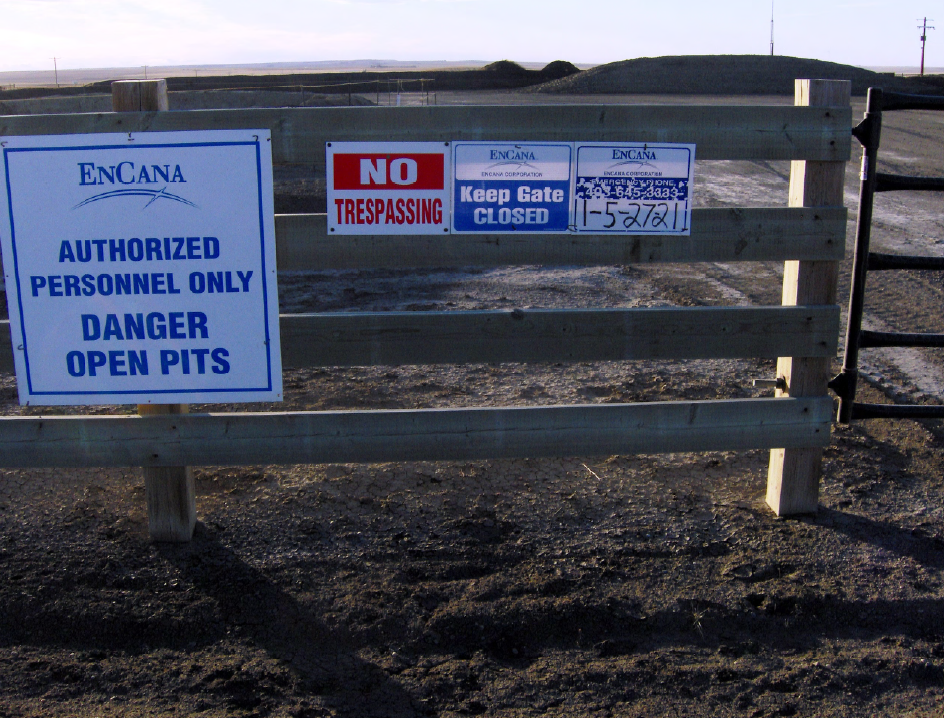
Encana’s unlined waste pits SW of Rosebud, Alberta
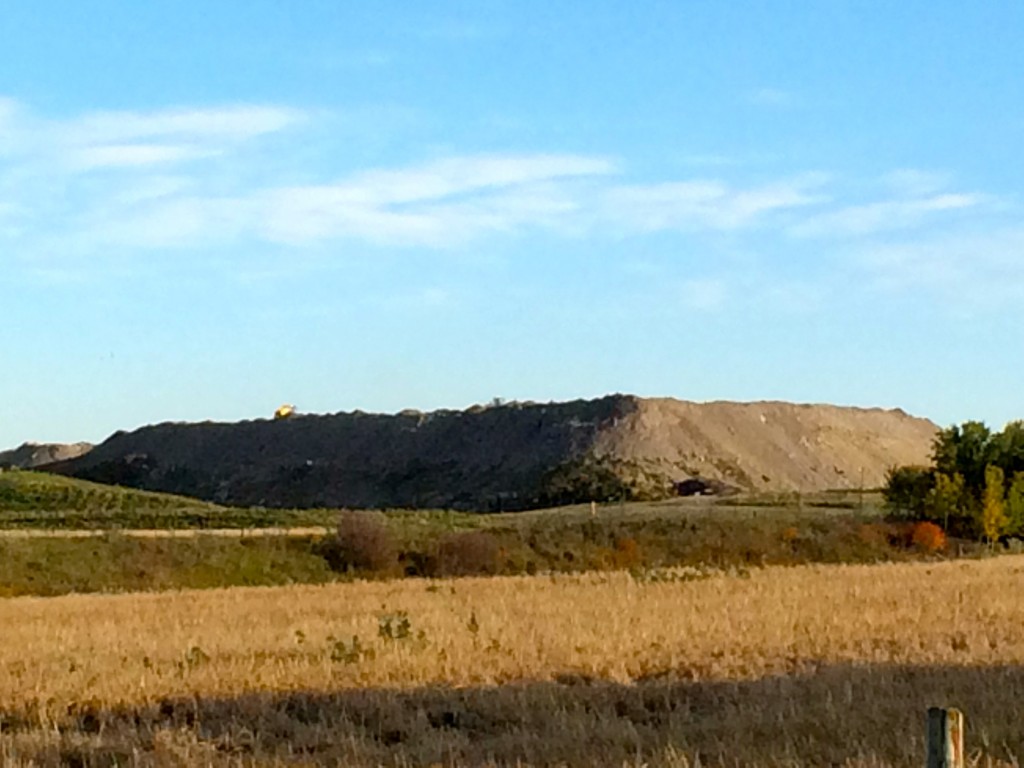
Oil industry waste pile, Didsbury Alberta. What is the community breathing when the wild Alberta winds blow?
And companies also use roads to get rid of their toxic waste, below examples in Rocky View County, near Calgary:
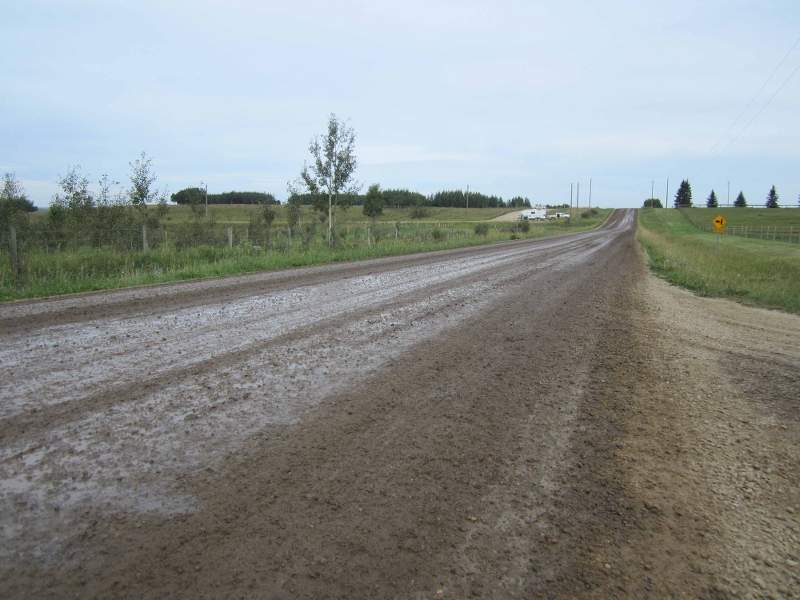

Companies need dust control in winter?
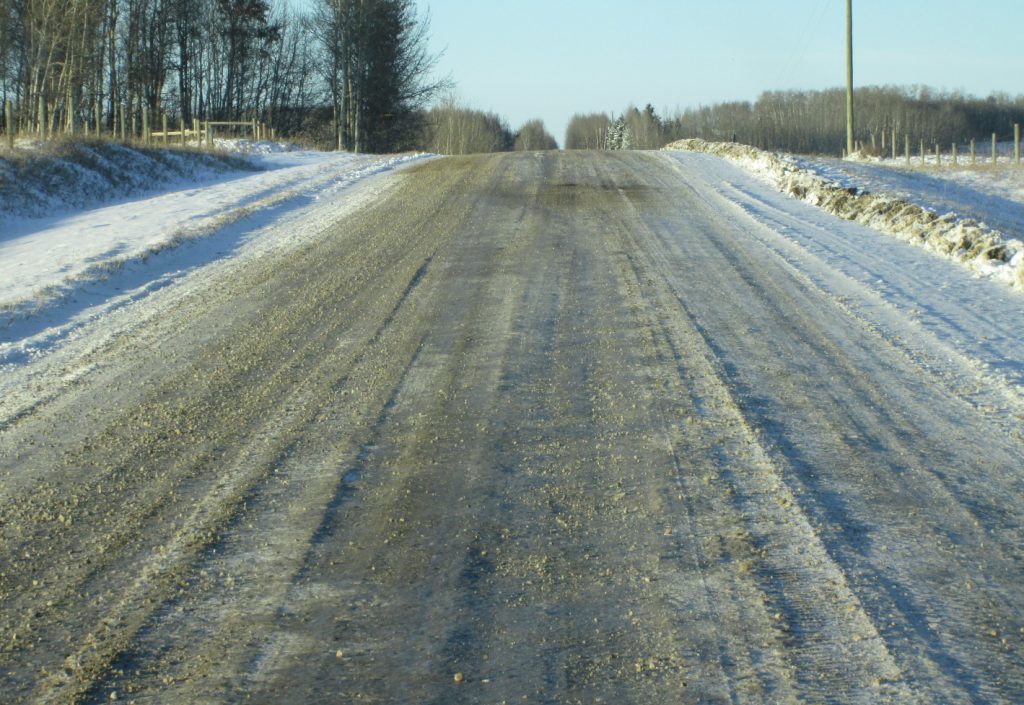
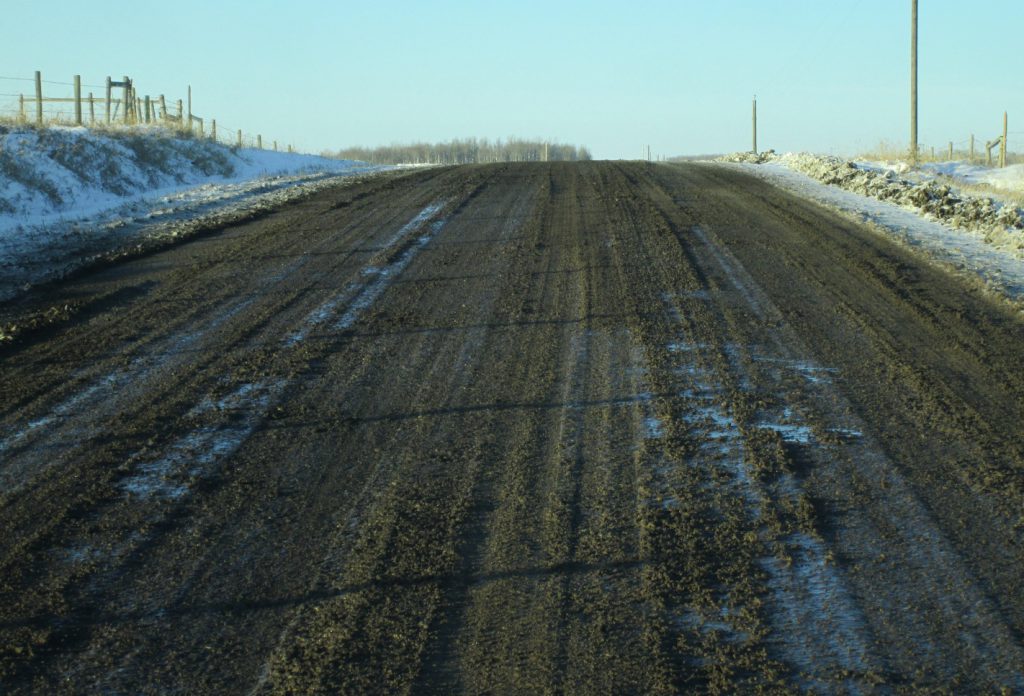
Paved roads need dust control?
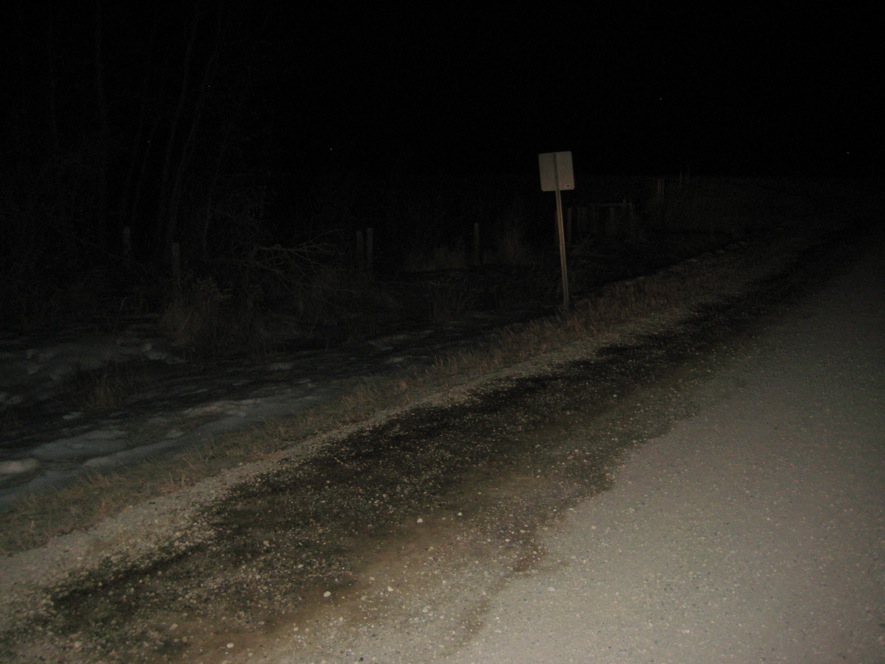
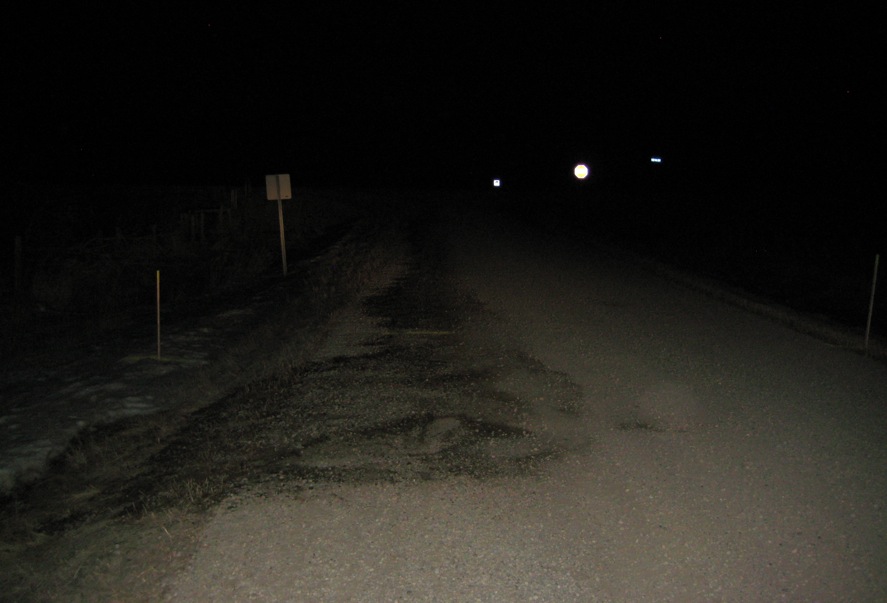

![]() What toxic chemicals are you accumulating under your garage or on/near your driveway where your children play and near and under your home insidiously used as a toxic dump by billion dollar profiting oil and gas companies (that you pay the taxes on and are legally liable for environmental contamination)?
What toxic chemicals are you accumulating under your garage or on/near your driveway where your children play and near and under your home insidiously used as a toxic dump by billion dollar profiting oil and gas companies (that you pay the taxes on and are legally liable for environmental contamination)?![]()
2011 & 2012 video clips of Encana/Ovintiv unconventional drilling waste dumping in the same field of foodland at Rosebud
2012: Fracking our Food Supply
A proportion (25% to 100%) of the water used in hydraulic fracturing is not recovered, and consequently this water is lost permanently to re-use, which differs from some other water uses in which water can be recovered and processed for re-use.  Likely the most important regulator impact statement ever on frac impacts. No wonder media and NGOs ignore(d) it.
Likely the most important regulator impact statement ever on frac impacts. No wonder media and NGOs ignore(d) it.

2012: Illegal waste dumping needs to stop
2012: Joe Bezjak, 76 yr. old jailed for kicking oilfield workers off his property for illegally dumping waste a second time, Fayette County, PA![]() Law and health violating polluters are protected by authorities while the harmed are brutally punished. It’s the courts and oil and gas industry’s favourite Rule of Law.
Law and health violating polluters are protected by authorities while the harmed are brutally punished. It’s the courts and oil and gas industry’s favourite Rule of Law.![]()
2013:
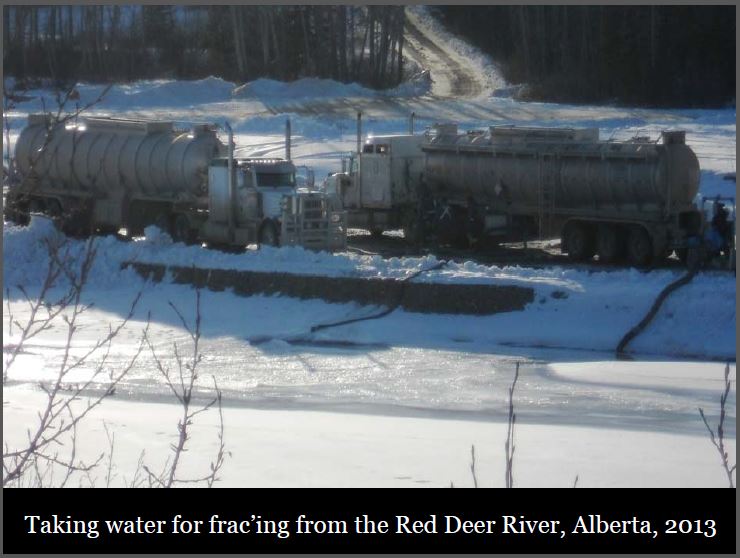
2014: American Chemical Society: A new look at what’s in ‘fracking’ fluids raises red flags but does not name the toxic chemicals of concern![]() Did this society know frac’ers were injecting and dumping PFAS via land spreading?
Did this society know frac’ers were injecting and dumping PFAS via land spreading?![]()
2014: Energy firms among top political donors in Alberta with Encana giving $30,516.50
2014: Fracking is dangerous, harms health, contaminates groundwater and it can and has been proven
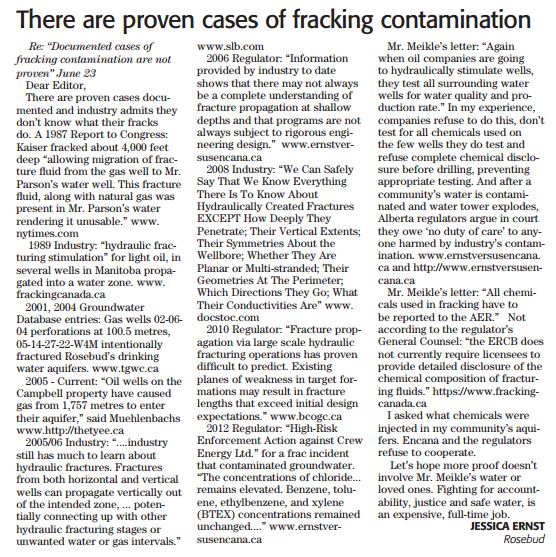
2016: THREE NEW STUDIES: FRAC WASTE CONTAMINATES WATER AND SOIL, SOME FOR THOUSANDS OF YEARS


![]() To the best of my knowledge, no Canadian (federal or provincial) authority has publicly reported (verbally or in writing) that Encana’/Ovintiv frac’d and contaminated a community’s drinking water aquifers in Canada, even though Encana’s data proving the company’s crimes have been public on this website for years, and provided to “law” makers and regulators (In 2006, I handed it in person to AB Environment Minister Guy Boutilier and his water regulating staff) long before this website was created, and was publicly available on the Alberta Groundwater Centre (database jointly run with the water regulator, Alberta Environment) 20 years ago. Even frac panel Chair, Dr. John Cherry, and his infamously useless frac panel left out Encana’s crimes and contamination in their frac report, in typical corporate crime enabling.
To the best of my knowledge, no Canadian (federal or provincial) authority has publicly reported (verbally or in writing) that Encana’/Ovintiv frac’d and contaminated a community’s drinking water aquifers in Canada, even though Encana’s data proving the company’s crimes have been public on this website for years, and provided to “law” makers and regulators (In 2006, I handed it in person to AB Environment Minister Guy Boutilier and his water regulating staff) long before this website was created, and was publicly available on the Alberta Groundwater Centre (database jointly run with the water regulator, Alberta Environment) 20 years ago. Even frac panel Chair, Dr. John Cherry, and his infamously useless frac panel left out Encana’s crimes and contamination in their frac report, in typical corporate crime enabling.![]()

Encana’s plan to frac Rosebud’s drinking water aquifers, at six different depths, filed at the Alberta Groundwater Centre, dated Oct 13 2003.
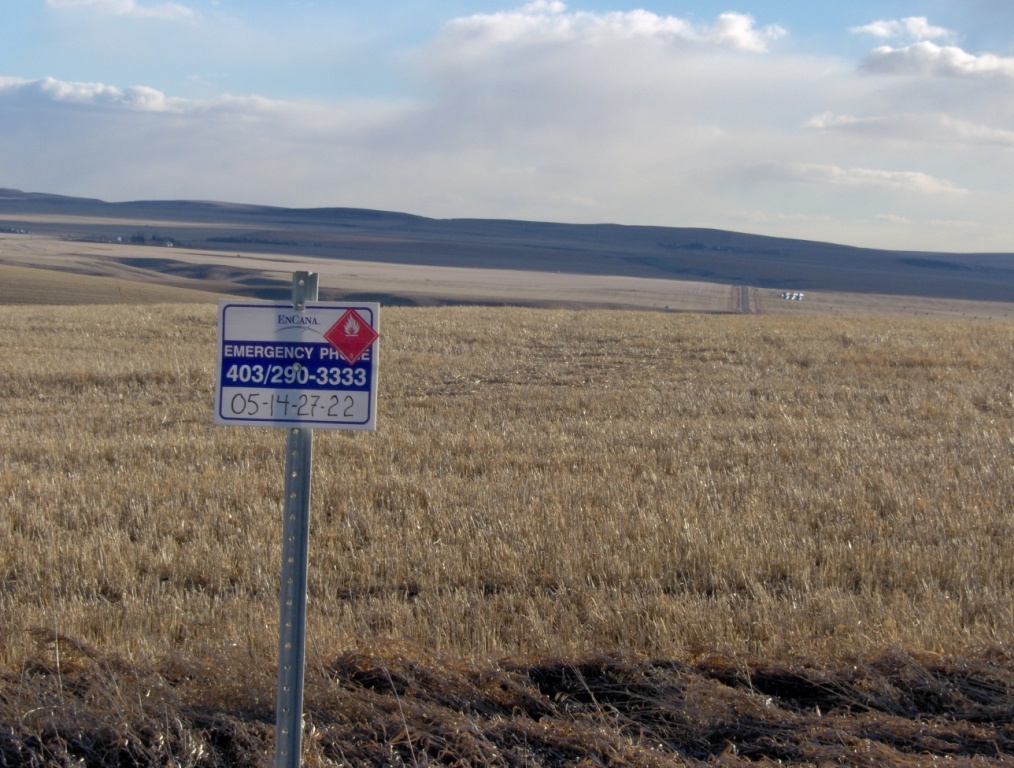
Encana/Ovintiv’s notorious illegal aquifer frac’ing gas well, 5-14-27-22-W4M, Rosebud, Alberta. After my lawsuit was filed, Encana covered up the well, removed all traces of it, including this sign.

1981: Bestiaire 24e by Quebec painter Alfred Pellan


2019: Artificial Turf and PFAS used in the oil and gas industry, e.g. Slick Water
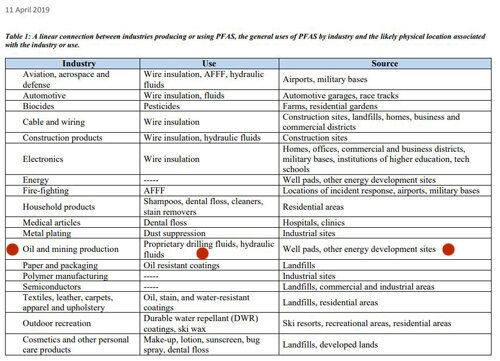
PFAS: Industry — Use — Source
Oil and mining production
Proprietary drilling fluids, hydraulic fluids
Well pads, other energy development sites
Source: Pa Department of Environmental Protection PFAS Sampling Plan
… Is it really any surprise we see “Proprietary drilling fluids” as a use for PFAS? After all, it’s officially known as “slick water fracking.” And since every Marcellus Shale well pad is an industrial site, shouldn’t the Pa DEP map show thousands more industrial sites in Pennsylvania as having potential PFAS contamination?
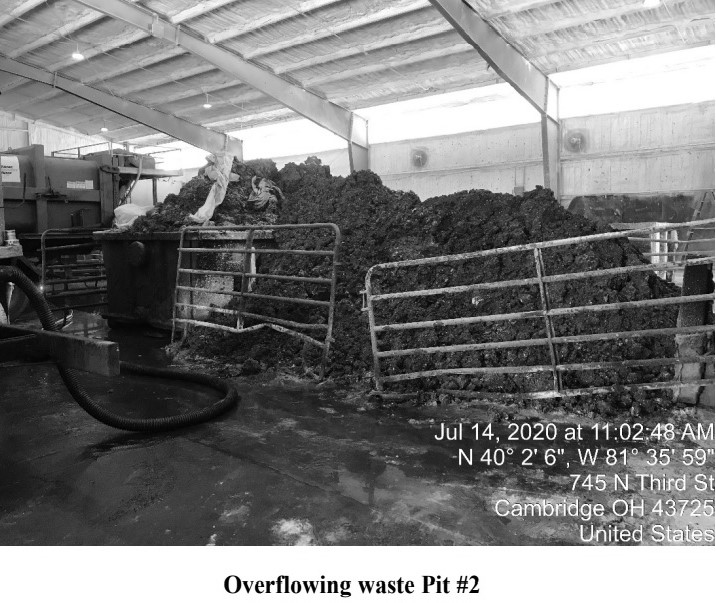

2020: Contamination of US drinking water with manmade “forever chemicals” far worse than previously estimated reports EWG; White House and EPA tried to stop the report from being published.![]() Of course they did. Polluter puppets.
Of course they did. Polluter puppets.![]()
Chemical giants DuPont and Daikin knew the dangers of a PFAS compound widely used in food packaging since 2010, but hid them from the public and the Food and Drug Administration (FDA), company studies obtained by the Guardian reveal.
The chemicals, called 6:2 FTOH, are now linked to a range of serious health issues, and Americans are still being exposed to them in greaseproof pizza boxes, carryout containers, fast-food wrappers, and paperboard packaging.
The companies initially told the FDA that the compounds were safer and less likely to accumulate in humans than older types of PFAS, also known as “forever chemicals” and submitted internal studies to support that claim.
But Daikin withheld a 2009 study that indicated toxicity to lab rats’ livers and kidneys, while DuPont in 2012 did not alert the FDA or public to new internal data that indicated that the chemical stays in animals’ bodies for much longer than initially thought.
Science from industry, the FDA and independent researchers now links 6:2 FTOH to kidney disease, liver damage, cancer, neurological damage, developmental problems and autoimmune disorders, while researchers also found higher mortality rates among young animals and mothers exposed to the chemicals.
Had the FDA seen the data, it is unlikely that it would have approved 6:2 FTOH, said Maricel Maffini, an independent researcher who studies PFAS in food packaging. And though Daikin may have broken the law, it and DuPont, which has previously been caught hiding studies that suggest toxicity in PFAS, are not facing any repercussions.
“Those things shouldn’t happen, and if they do then there should be consequences, but oversight is lax,” Maffini said.
In 2020, the FDA reached agreements with some major PFAS manufacturers to voluntarily stop using 6:2 FTOH compounds in food packaging within five years. But documents show that the FDA first became aware of DuPont’s hidden study in 2015, and public health advocates say a 10-year timeline to reassess and remove the chemical is unacceptable.
Moreover, the FDA phase-out only applies to 6:2 FTOH compounds, and does not include other similar “short chain” PFAS, raising questions about whether the agency is fully protecting the public from the class of potentially toxic chemicals.
… Industry reports and communications among the FDA and PFAS producers between 2008 and 2020 show how a sequence of inadequate chemical safety analyses, hidden studies and lax oversight created a scenario in which Americans continue to be exposed to the dangerous compound in food packaging.
… Though the law does not require companies to make such information public, the results strongly suggested a health threat, and DuPont “had an ethical obligation to not just publish it, but flag it for the FDA”, Neltner said.
Three years later, DuPont partially summarized its 2012 findings in a peer-reviewed 6:2 FTOH study that Maffini said used “cherry-picked” data to support its claim that the compound was safe. Though it omitted the 2012 study’s details, communications show it caught the attention of the FDA, which wrote that the study alerted the agency “to potential biopersistence of [6:2 FTOH] and raised potential safety concerns”.
… The FDA in 2009 approved the Daikin-developed 6:2 FTOH compound for use in food packaging, partly basing the decision on the company’s studies that suggested that the chemical was non-toxic.
But about 10 years later, Maffini and Neltner discovered that Daikin had withheld two studies from the FDA that suggested toxicity to lab animals’ livers and kidneys at low exposure levels – one completed before the FDA approved the chemical, and one after.
They caught the omission by cross-checking studies for the chemical posted to Daikin’s website with those submitted to the FDA, and found the data on health effects was never given to the agency. Neltner noted that the law required the first study to be submitted to the FDA. Maffini said they asked Daikin about the omission and the company responded by removing the report from its website, but it can still be found using the Wayback machine site.
As part of its safety review of the chemical, the FDA convened a 2018 meeting with Chemours, Daikin and others in the industry at which the agency requested studies related to 6:2 FTOH. Communications confirm that the FDA did not previously have DuPont’s 2012 study or Daikin’s 2007 study.
Between 2018 and 2020, three FDA analyses that included Daikin’s and DuPont’s studies broadly concluded that 6:2 FTOH may stick in the human body for years and could be more toxic than the companies had previously suggested. …
2022: Across the US, towns warn of toxic PFAS chemicals in drinking water
2022 09: ChemSec@chemsec: In the town of Altötting, people are no longer allowed to donate blood because it contains too much #PFAS.
![]() The above documentary is excellent but in German with only German subtitles. The visuals make it easy to understand regardless.
The above documentary is excellent but in German with only German subtitles. The visuals make it easy to understand regardless.![]()
2022 10: Lyon, Veneto and Antwerp plagued by dangerous forever chemicals, as call for an EU ban gains steam
2022 10: ‘Do not eat’: High levels of toxic ‘forever chemicals’ found in deer and fish
“You’re getting it in your water, you’re getting it in your food, you’re getting it in wild game.”
2022 10: EPA loophole lets 600 toxic PFAS chemicals evade review, petition says
2022 10: More than 80% of US waterways contaminated by ‘forever chemicals’
… “WHO ignored the last 20 years of science, whether it’s epidemiological data, animal data, or experimental data, and they said ‘there’s so much uncertainty that we can’t do anything’,” she told the Guardian. …
PFAS are a class of about 12,000 chemicals designed to make products resist water, stains and heat. They are used in thousands of consumer products and thought to be contaminating drinking water for more than 200 million people in the US. Independent research links PFAS to cancer, birth defects, liver disease, decreased immunity, kidney disease, higher cholesterol and a range of other serious health effects. …
Some independent researchers say evidence suggests industry-connected authors played a large role in developing WHO’s limits and justifications. Among them is Michael Dourson, whom Donald Trump in 2017 nominated to oversee the EPA’s chemical safety division.
2022 11 10: California sues 3M, DuPont over toxic ‘forever chemicals’

… DuPont has never manufactured PFOA, PFOS or firefighting foam, said spokesperson Daniel Turner, referring to two PFAS substances. …

2022 12 05: 6th Circ. Upholds $40M Teflon Cancer Verdict Against DuPont
2022 12 06: DuPont loses challenge over cancer victim’s $40 mln verdict in PFAS case
Summary:
- U.S. appeals court said findings in other, related cases applied to Travis Abbott’s case
- Abbott said his multiple cancer diagnoses resulted from drinking water tainted by the chemical PFOA
 PFOA is a PFAS
PFOA is a PFAS
- PFOA was used in nonstick household products such as Teflon
A federal appeals court has upheld a $40 million verdict for a cancer survivor who sued E.I. du Pont de Nemours and Co after years of exposure to a toxic chemical that it manufactured.
The 6th U.S. Circuit Court of Appeals said Monday DuPont could not challenge the verdict, which relied on a finding in related cases that PFOA, a chemical discharged by DuPont into public waterways, was linked to the man’s cancer.
… The decision upheld a jury verdict awarded to Travis Abbott in 2020.
PFOA is among a class of chemicals known as per- and polyfluoroalkyl substances (PFAS) that have been used in nonstick products such as Teflon, and are associated with certain cancers. They are referred to as “forever chemicals” because they don’t easily break down in the human body or nature.
Abbott sued in 2017, claiming prolonged exposure to PFOA in his drinking water caused him to have testicular cancer twice.
DuPont has said Abbott’s level of exposure was unlikely to have caused his cancer.
A jury awarded Abbott $40 million after a 2020 trial in Ohio federal court, finding that PFOA was likely the cause of his illness.
Abbott’s case against DuPont is one of thousands in multidistrict litigation (MDL) consolidated in Ohio. The lawsuits claim that the company poisoned drinking water by discharging the chemical PFOA into waterways from its plant in Parkersburg, West Virginia.
Dupont challenged the verdict, claiming it had been unfairly kept from raising defenses based on the specifics of Abbott’s alleged exposure.
The company claimed that a settlement reached in 2005 shouldn’t have been used to limit it from challenging every instance where an individual may have developed cancer after low level exposure. Juries in two bellwether cases in the MDL had earlier determined the settlement had broadly barred that defense.
… The case is In re Abbott v. E. I. du Pont de Nemours & Co, 6th U.S. Circuit Court of Appeals, No. 21-3418. …
2022 12 20: 3M to Stop Producing PFAS ‘Forever Chemicals’ by End of 2025 ![]() Note the timing after above massive legal loss for Dupont. 2025 is way too late for humanity and other species. Even if companies stop producing PFAS, I expect they’ll pay frac’ers to take their deadly waste to cheaply (make taxpayers and investors pay to) dispose of via frac’ing and keep it secret, for many years after 2025.
Note the timing after above massive legal loss for Dupont. 2025 is way too late for humanity and other species. Even if companies stop producing PFAS, I expect they’ll pay frac’ers to take their deadly waste to cheaply (make taxpayers and investors pay to) dispose of via frac’ing and keep it secret, for many years after 2025.![]()
… Longer-term legal liabilities could reach $30 billion or more …
“What’s lacking is any statement or commitment to accept responsibility for the damage that’s already been caused,” Rob Bilott, a partner in the Cincinnati office of Taft Stettinius & Hollister LLP, said in a phone interview.
Biloott has led several legal challenges over the chemicals, including those portrayed in the Hollywood movie Dark Waters….
The Environmental Working Group, a nonprofit based in Washington DC that has documented the chemicals’ widespread presence in water, said 3M’s actions come too late for people who were unknowingly contaminated.
“After telling everyone – their neighbors, their workers, and their regulators – that PFAS are safe while poisoning the entire planet, 3M is now pledging to slink out the back door with no accountability. Congress and the courts cannot allow this happen,” the group said in an emailed statement. …
… “The pressure is mounting from every direction,” said Sonja Haider, senior business and investment adviser with ChemSec, which helped coordinate the campaign. “The lawsuits won’t go away – the companies will have to cover that – and the regulatory pressure is coming,” …
2023 01 08: Farmer uncovers company’s dark secret after cows kept dying: ‘An imminent and substantial threat to health’
… Back in the ‘90s, Tennant noticed something strange was happening to his cows. No matter how much he fed them, they kept losing weight, developing tumors, and dying, reported the Chicago Tribune.
Considering that the farm was situated near a DuPont factory and landfill, Tennant figured something might be amiss. As it turned out, waste from the factory, which produced Teflon nonstick products, had made its way into a nearby stream, poisoning the cows that were drinking from it. …
2023 01 14: Pennsylvania sets drinking water standards on two ‘forever chemical’ PFAS compounds
… Currently, there are no federal maximum contaminant levels (MCLs) for PFAS, shorthand for per- and polyfluoroalkyl substances, in public drinking water. …
2023 01 16: What 3M’s decision to stop making PFAS means for water providers ![]() Did 3M pay frac’ers to take their deadly PFAS production waste and frac with it (like how some want frac’ers to frac with nuclear waste)?
Did 3M pay frac’ers to take their deadly PFAS production waste and frac with it (like how some want frac’ers to frac with nuclear waste)?![]()
In December, 3M announced that it will stop making PFAS per- and polyfluoroalkyl substances), a group of thousands of chemicals it has produced for decades, by 2025.
3M’s announcement begs the questions of why the company is taking this action now, and what does it mean for water providers across the country. While there may not be one simple answer to the first question, it seems that 3M’s past actions have finally caught up to the company and that the legal efforts to expose the harms of PFAS, dating back to the first case in 1999, as laid out in the movie Dark Waters, have led to significant change. …
… The widespread use of PFAS has created an irreversible threat to health and the environment. Exposure to forever chemicals has been associated with kidney and testicular cancer, high blood pressure and pre-eclampsia, thyroid disease, liver damage, lower birth weight and size, immune effects and hormone disruption [5].
PFAS also accumulate and persist in our environment, with the ability for long-range transport far from the emission points. …
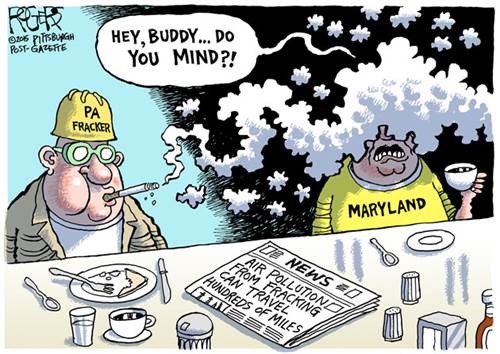
2023 01 17: Study raises alarm over ‘forever chemicals’ in fish
… Published Tuesday in the peer-reviewed journal Environmental Research, the findings offer a grim look at how contaminated some parts of the food chain are with per- and polyfluoroalkyl substances. In particular they zero in on PFOS, a compound linked to health impacts including cancer and kidney and liver disease.
Fish consumption “has been observed as an indicator of PFAS,” the scientists noted, especially PFOS. …
2023 01 23: After federal PFAS standards delay, environmental groups call for urgency
2023 02: Systematic review and meta-analysis of epidemiologic data on vaccine response in relation to exposure to five principal perfluoroalkyl substances![]() This study does not mention COVID, but is there a connection between humans globally contaminated now with PFAS and some vaccinated and boosted for sars2 still getting hospitalized and dying?
This study does not mention COVID, but is there a connection between humans globally contaminated now with PFAS and some vaccinated and boosted for sars2 still getting hospitalized and dying?![]()
Highlights
• Per- and polyfluoroalkyl substances (PFAS) are environmental contaminants in humans.
• Serum PFAS concentrations may reduce antibody response after vaccination.
• We conducted a systematic review and meta-analysis of antibody response and PFAS.
• An inverse association was found, e.g, −5% per doubling of perfluorooctanoate.
• The association was present across antibodies to multiple different antigens.
